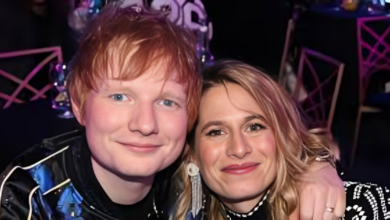Fauxmoi The Emerging Trend of Hyperrealism in Fashion and Art

In recent years, a new trend has emerged that blurs the lines between reality and illusion, captivating the worlds of fashion, art, and even social media. This trend is known as Fauxmoi, a term that combines “faux” (meaning fake or imitation in French) and “moi” (meaning me). Fauxmoi refers to the hyperrealistic aesthetic that embraces digital manipulation, imitation, and the blending of the artificial with the authentic to create visuals that seem almost indistinguishable from reality but are, in fact, constructs.
The rise of Fauxmoi has had a significant impact on the way people perceive identity, beauty, and artistic expression. In this article, we will delve deep into the origins, rise, and implications of Fauxmoi, exploring its influence on fashion, art, and culture, as well as its broader societal implications.
The Origins of Fauxmoi
The Fauxmoi trend finds its roots in a blend of various cultural and technological movements. It is heavily influenced by the rise of hyperrealism in art and fashion, where artists and designers strive to create images or objects that look so lifelike, they appear to be real. Hyperrealism as an art form dates back to the 1960s and 1970s, with artists like Chuck Close and Richard Estes pushing the boundaries of realism in painting. Their works often involved meticulous detail that mimicked high-resolution photography.
In fashion, hyperrealism gained traction with the advent of advanced 3D printing, CGI (computer-generated imagery), and digital design. Designers began experimenting with these technologies to create garments and visuals that look so perfect and flawless that they almost appear surreal. From digitally created models to virtual runways, Fauxmoi has taken the fashion industry by storm, challenging traditional ideas of what is real and what is not.
Fauxmoi in Fashion: Blurring the Line Between Real and Fake
One of the primary ways Fauxmoi manifests in the fashion industry is through the creation of virtual influencers and digital fashion models. These are hyperrealistic avatars or computer-generated personas that exist only in the digital realm but have garnered massive followings on social media platforms like Instagram and TikTok. These virtual influencers are often designed to look indistinguishable from human models, complete with flawless skin, perfect proportions, and trendy fashion sense.
A famous example of this is Lil Miquela, a virtual influencer created by the Los Angeles-based startup Brud. Since her creation in 2016, Lil Miquela has amassed millions of followers, modeled for high-end fashion brands like Prada and Calvin Klein, and even released music. What makes Lil Miquela stand out is her hyperrealistic appearance—she looks like a real person but exists only in the digital space.
This trend of virtual influencers raises questions about the authenticity of the fashion world and what it means to have an online identity. It challenges the traditional roles of models and celebrities, offering a new form of digital representation that is both captivating and unsettling. Are these virtual influencers the future of fashion, or do they represent a superficial and artificial version of reality?
Similarly, digital fashion has become an integral part of the Fauxmoi aesthetic. Digital fashion involves the creation of clothing that exists only in the digital realm, often designed for avatars or virtual environments. These garments are never physically produced but are instead rendered digitally, allowing for limitless creativity. Brands like The Fabricant and Tribute Brand specialize in digital-only collections, where users can purchase virtual outfits to wear in their online avatars or social media posts.
This shift toward digital fashion reflects a broader move toward sustainability in the fashion industry. By eliminating the need for physical production, digital fashion reduces waste, energy consumption, and the environmental impact of traditional garment manufacturing. In this sense, Fauxmoi can be seen as a forward-thinking approach that aligns with the growing demand for eco-friendly fashion solutions.
Fauxmoi in Art: Hyperrealism and Digital Manipulation
The Fauxmoi trend is not limited to the fashion world; it has also made significant inroads in the art world. Hyperrealism in art has taken on new dimensions with the use of digital tools and technologies. Artists are now able to create works that blur the boundaries between reality and fiction, often using digital manipulation to enhance or distort what we perceive as real.
One prominent example of this is Beeple, a digital artist who gained worldwide fame when he sold a digital artwork for $69 million in a Christie’s auction in 2021. Beeple’s work, which often combines surreal and hyperreal elements, is a prime example of the Fauxmoi aesthetic. His pieces are visually striking, with lifelike details that are digitally enhanced to create fantastical, almost otherworldly compositions.
The rise of NFTs (Non-Fungible Tokens) has also played a role in the Fauxmoi trend within the art world. NFTs allow artists to sell digital works that are verified as unique through blockchain technology. This has opened up new opportunities for artists to experiment with digital mediums, creating hyperrealistic art that exists solely in the digital realm. The ability to create and sell digital art as one-of-a-kind pieces challenges the traditional notions of art ownership and value, aligning with the Fauxmoi ethos of blending the real and the artificial.
The Impact of Fauxmoi on Social Media and Self-Identity
Social media has been a driving force behind the rise of Fauxmoi. Platforms like Instagram, TikTok, and Snapchat have popularized the use of filters and photo-editing apps that allow users to alter their appearances in real time. These filters often enhance users’ features to create a hyperreal version of themselves—flawless skin, perfectly symmetrical faces, and exaggerated beauty standards.
This has given rise to what some call the “Instagram face,” a term used to describe a certain look that has become ubiquitous on social media. This face typically features plump lips, high cheekbones, and smooth, poreless skin, all achieved through digital manipulation. The widespread use of these filters has led to a growing disconnect between real-life appearances and the hyperreal images people project online.
The Fauxmoi trend highlights a broader cultural shift toward curated identities, where individuals present carefully constructed versions of themselves online. This raises important questions about authenticity, self-perception, and the pressure to conform to unrealistic beauty standards. As people increasingly rely on digital tools to enhance their appearances, the line between the real and the artificial becomes increasingly blurred.
The Future of Fauxmoi: Where Are We Headed?
As technology continues to evolve, it is likely that the Fauxmoi trend will only become more pervasive. With advances in artificial intelligence, 3D rendering, and augmented reality, we can expect to see even more hyperrealistic digital influencers, fashion, and art. The boundaries between the physical and digital worlds are dissolving, creating new possibilities for creative expression.
At the same time, the rise of Fauxmoi raises important ethical considerations. What does it mean to live in a world where the line between real and fake is increasingly blurred? How will this affect our perception of reality, identity, and authenticity? These are questions that society will need to grapple with as Fauxmoi continues to shape the future of fashion, art, and culture.
Conclusion
Fauxmoi represents a fascinating convergence of technology, creativity, and cultural trends. It challenges our perceptions of reality and invites us to question what is real and what is artificial. As the trend continues to evolve, it will undoubtedly leave a lasting impact on the worlds of fashion, art, and social media, offering new possibilities for expression while raising important questions about identity and authenticity in the digital age.




